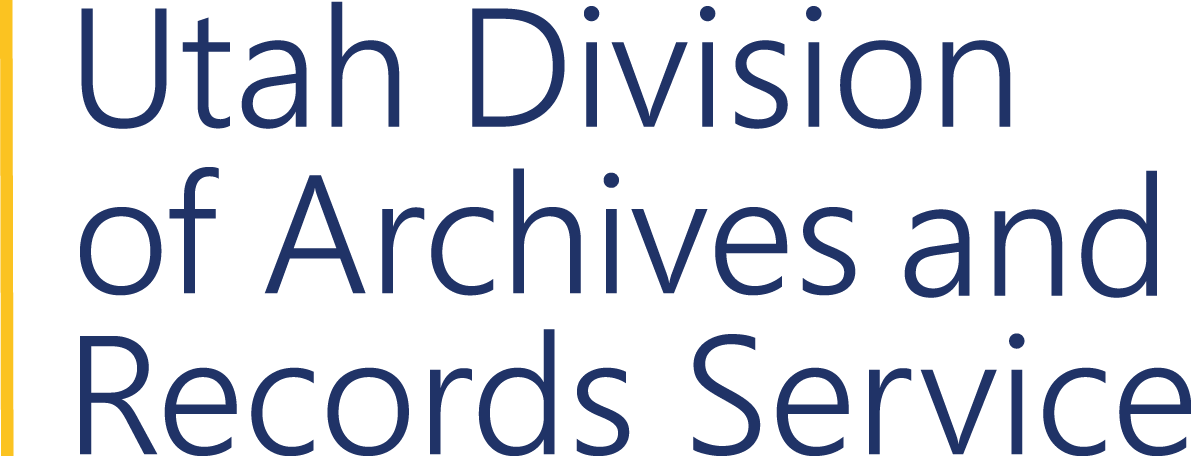OHIO MINING DISTRICT (UTAH). RECORDER
Agency History #3131
CREATION
The Tushar Mountains west of Marysvale in Piute County contained rich deposits of gold, silver, copper and lead. According to general practice mineral deposits in the public domain were free and open to exploration, and locators of the same had exclusive right of possession. Miners in local areas organized mining districts to coordinate activities and keep a record of individual claims. Prospectors in Pine Canyon (renamed Bullion Canyon) organized the Ohio Mining District in 1868. The boundaries extended from Marysvale, on the east, up Pine Canyon to the summit of the mountains. By the time Congress passed a federal mining law in 1872, (Statutes at Large, Treaties, and Proclamations, of the United States of America, vol. XVII, 1872, chap. 152) legitimizing already established practice, mining activity in the Ohio District had led to a mining town with 50 buildings and more than 100 inhabitants. After Congressional legislation, miners in Bullion City met (1872) and re-adopted the original by-laws of 1868. In 1873 Bullion City became the county seat of Piute County. Some of the most productive mines in the district included the Bully Boy, Copper Belt, Morning Star, and Belcher Mines. During the 1870s prospectors in the Ohio District moved on to follow reports of discoveries elsewhere. In particular, many of them followed the 1878 discovery which became the Deer Trail Mine in the Mount Baldy District immediately to the south. By end of the 1870s Bullion City had been abandoned and the county seat moved to Junction. The Ohio Mining District, however, continued to function until 1897 when the Utah State Legislature transferred the function of keeping mining records from mining district recorders to the county recorder (Laws of Utah, 1897, chapter 36, "Mining Claims").
FUNCTIONS
Ohio Mining District recorders to record all mining laws, meeting minutes, location notices for lodes, tunnels, mill, and land rights, and all other matters pertaining to the district. All of these were to be recorded in hard bound books, which were to be open for public inspection only in the presence of the district recorder or his deputy. At first the district recorder's hours were established from 9 a.m. to 4 p.m., but at the 1891 miners' meeting the district determined that the district recorder's office should be open at all hours of the day or night with a deputy always there if possible. Ohio Mining District by-laws required that all claims be distinctly marked with the written names of the discoverers. Prospectors were required to have the claim recorded within 20 days of discovery and to leave the marker at the site for at least one year. In order to maintain a claim, federal law required the performance of at least $100 worth of labor or improvements annually. The Ohio Mining District required that $50 worth of labor be performed within the first six months. District law also required the district recorder to visit each claim to assess the value of work done. As payment for his services, the recorder was authorized to collect $3 for recording each claim, $2 for each visit to a mine or claim site to assess the value of work done, and $.50 for issuing certificates.
ADMINISTRATION
Ohio Mining District recorders were elected from among the claim holders in the district at annual miners' meetings.
Ohio District recorders appointed deputies to assist in carrying out their responsibilities. In 1897 the Utah Legislature enacted a mining law which transferred all responsibility for recording mining records to county recorders (Laws of Utah, 1897, chapter 36, "Mining Claims").
| MINING DISTRICT RECORDERS | |
| W.W. Goodale | 1872, Oct-1874, May |
| John Pope | 1874, Jun-1876, May |
| James A. Stark | 1876, Jun-1878, Jul |
| D.C. Tate | 1878, Aug-1880, Sep |
| C.B. Robinson | 1880, Oct-1881, Jul |
| William D. Wilson | 1881, Aug-1882, Jul |
| James A. Stark | 1882, Aug-1883, Jul |
| D.C. Tate | 1883, Aug-1888, Oct |
| Ruben DeWitt | 1888, Nov-1895, Dec |
| Harry L. Mills | 1896, Jan-1896, Dec |
| Henry King | 1897, Jan-1897, May |
COMPILED BY: Rosemary Cundiff , March 2002
SOURCES
Laws of Utah, 1897, Chapter 36, "Mining Claims."
Newell, Linda King, A History of Piute County. Utah State Historical Society; Piute County Commission (Salt Lake City: 1999).
Ohio Mining District (Utah), Recorder. Mining records. Utah State Archives (Series 23934).
Statutes at Large, Treaties, and Proclamations, of the United States of America, 1872, vol. XVII, chap. 152. Published by authority of Congress, Boston: Brown, Little and Company.
Thompson, George A. Some Dreams Die: Utah's Ghost Towns and Lost Treasures. Dream Garden Press: Salt Lake City, 1982.
Page Last Updated July 2, 2003.
